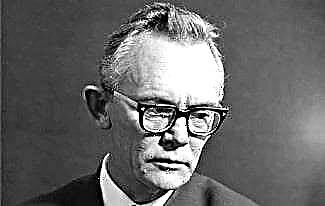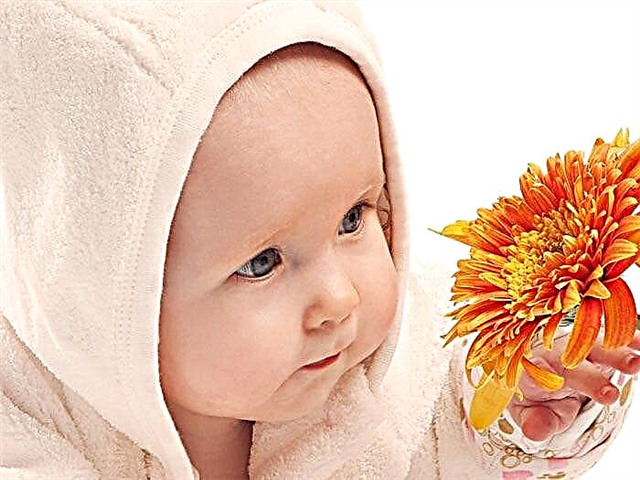Johann Baptiste Strauss 2 (1825-1899) - Austrian composer, conductor and violinist, recognized as the "king of the waltz", the author of numerous dance pieces and several popular operettas.
There are many interesting facts in Strauss's biography, which we will talk about in this article.
So, here is a short biography of Johann Strauss.

Strauss biography
Johann Strauss was born on October 25, 1825 in Vienna, the capital of Austria. He grew up and was brought up in the family of the famous composer Johann Strauss Sr. and his wife Anna.
The "waltz king" had 2 brothers - Joseph and Edward, who also became famous composers.
Childhood and youth
Johann took possession of music at an early age. Watching his father's long rehearsals, the boy also wanted to become a popular musician.
However, the head of the family was categorically opposed to any of the sons following in his footsteps. For example, he encouraged Johann to become a banker. For this reason, when Strauss Sr. saw a child with a violin in his hands, he flew into a rage.
Only thanks to the efforts of his mother, Johann was able to secretly learn to play the violin from his father. There is a known case when the head of the family, in a fit of anger, whipped a child, saying that he would “beat the music out of him” once and for all. Soon he sent his son to the Higher Commercial School, and in the evenings he made him work as an accountant.

When Strauss was about 19 years old, he graduated from receiving music education from professional teachers. Then the teachers offered him to purchase the appropriate license.
Arriving home, the young man told his mother that he planned to apply to the magistrate for a license, giving the right to conduct an orchestra. The woman, fearing that her husband would forbid Johann to achieve his goal, decided to divorce him. She commented on her divorce with the repeated betrayal of her husband, which was absolutely true.
In revenge, Strauss Sr. deprived all the children born to Anna of the inheritance. He wrote off the entire fortune to his illegitimate children, who were born to him from his mistress Emilia Trumbush.
Immediately after breaking up with Anna, the man officially signed with Emilia. By that time, they already had 7 children.

After his father left the family, Johann Strauss Jr. was finally able to fully concentrate on music. When revolutionary unrest broke out in the country in the 1840s, he joined the Habsburgs, writing the March of the Insurgents (Marseillaise Vienna).
After the suppression of the uprising, Johann was arrested and brought to trial. However, the court ruled to release the guy. An interesting fact is that his father, on the contrary, supported the monarchy by composing "Radetzky's March".
And although there was a very difficult relationship between the son and the father, Strauss Jr. respected his parent. When he died of scarlet fever in 1849, Johann wrote a waltz "Aeolian Sonata" in his honor, and later published a collection of his father's works at his own expense.
Music
At the age of 19, Johann Strauss managed to assemble a small orchestra, with which he successfully performed in one of the capital's casinos. It is worth noting that after learning about this, Strauss Sr. began to put a spoke in his son's wheels.
The man used all his connections to prevent his son from performing at prestigious venues, including court balls. But, in spite of the efforts of the talented Strauss Jr.'s father, he was appointed conductor of the military orchestra of the 2nd regiment of the civilian militia (his father directed the orchestra of the 1st regiment).
After the death of Johann the Elder, Strauss united the orchestras and went on tour in Austria and other European countries. Wherever he performed, the audience always gave him a standing ovation.

In an effort to win over the new Emperor Franz Joseph 1, the musician dedicated 2 marches to him. Unlike his father, Strauss was not an envious and proud man. On the contrary, he helped the brothers build a musical career by sending them to perform at certain events.
An interesting fact is that once Johann Strauss uttered the following phrase: “Brothers are more talented than me, I’m just more popular”. He was so gifted that in his own words the music "poured out of him like water from a tap."
Strauss is considered to be the founder of the Viennese waltz, which consists of an introduction, 4-5 melodic constructions and a conclusion. Over the years of his creative biography, he composed 168 waltzes, many of which are still performed at the largest venues in the world.

The heyday of the composer's creativity came at the turn of 1860-1870. At that time he wrote his best waltzes, including "On the beautiful blue Danube" and "Tales from the Vienna Woods." Later, he decides to give up his court duties, giving in to their younger brother Edward.
In the 1870s, the Austrian toured extensively around the world. Interestingly, while performing at the Boston Festival, he set a world record for being able to conduct an orchestra, which number exceeded 1000 musicians!
At that time, Strauss was carried away by operettas, again becoming the founder of a separate classical genre. Over the years of his biography, Johann Strauss created 496 works:
- waltzes - 168;
- poles - 117;
- square dance - 73;
- marches - 43;
- mazurkas - 31;
- operettas - 15;
- 1 comic opera and 1 ballet.
The composer was able to raise dance music to symphonic heights in an amazing way.
Personal life
Johann Strauss toured Russia for 10 seasons. In this country, he met Olga Smirnitskaya, whom he began to court and seek her hand.
However, the girl's parents did not want to marry their daughter to a foreigner. Later, when Johann found out that his beloved had become the wife of the Russian officer Alexander Lozinsky, he married the opera singer Yetti Chalupetskaya.
An interesting fact is that by the time they met, Khalupetskaya had seven children from different men whom she gave birth out of wedlock. Moreover, the woman was 7 years older than her husband.
Nevertheless, this marriage turned out to be a happy one. Yetty was a loyal wife and a true friend, thanks to which Strauss could safely get on with his work.

After the death of Chalupetskaya in 1878, the Austrian married a young German artist Angelica Dietrich. This marriage lasted 5 years, after which the couple decided to leave. Then Johann Strauss went down the aisle for the third time.
The composer's new beloved was the widowed Jewess Adele Deutsch, who was once the wife of a banker. For the sake of his wife, the man agreed to convert to another faith, leaving Catholicism and choosing Protestantism, and also accepted German citizenship.
Although Strauss was married three times, none of them had children.
Death
In recent years, Johann Strauss refused to tour and almost never left his home. However, on the occasion of the 25th anniversary of the operetta The Bat, he was persuaded to conduct the orchestra.
The man got so hot that he caught a serious cold on the way home. Soon, the cold turned into pneumonia, from which the great composer died. Johann Strauss died on June 3, 1899 at the age of 73.
Strauss Photos















